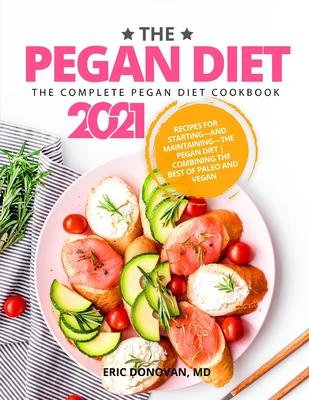
Vegan diet plans are low fat diets that are better to your health. They also lower blood sugar and cholesterol. The basis of a vegan diet is legumes. A variety of grains and beans are possible to be included in a vegan-friendly diet. The next step is to create a plan that fits your life and your personal goals.
Low-fat vegan diets are more effective at reducing blood sugar and cholesterol
A new study shows that low-fat vegan diets can be more effective in controlling blood sugar than non-vegan alternatives. Researchers looked at 11 random trials that involved 796 Type 2 and Type 3 diabetics, as well as overweight participants. Vegan diets have a significantly lower body weight, BMI and total cholesterol than non-vegan diets.
Low-fat vegan diets are more effective in lowering blood sugar levels than omnivorous diets. One reason is the decrease in insulin resistance, and the increased postprandial metabolism that plant-based diets provide. Another reason that there is a lower risk of developing type II diabetes and insulin resistance is because plant-based diets might reduce the buildup in lipids within muscle and liver cells. People with diabetes should be careful about what they eat and plan ahead. Before they eat, they should check the menus at restaurants.

A vegan diet plan is built on legumes
One of the best ways to ensure you get enough protein on a vegan diet is to increase your intake of legumes. This food group includes peanuts, beans, and soy products. Legumes have more protein than any other food group and are high in lysine.
These foods are also good sources of fiber and protein. Whole grains are rich in fiber and protein. Boiling potatoes are a high-glycemic, carbohydrate and can provide good sources of soluble fibre. These foods will allow you to feel fuller and last longer.
Plant-based diets can help people lose weight
A variety of plant-based diets can be used to help people lose weight. They don't require you to count calories. You can eat a wide range of plant-based healthy foods and not feel guilty about eating too many calories. Third, plant-based eating plans can reduce appetite and help people lose weight. Although these diets may help you lose weight quickly, they may not work for everyone. Some people experience a slow loss of weight, while others notice dramatic results.
Many doctors and nutritionists endorse the popularity of plant-based diets over traditional ones. These diets include a wide range of healthy foods that can promote weight loss. They also reduce the intake of highly processed, inflammatory food that has been linked to many diseases.

Finding a vegan food plan that works well for you
The first step towards losing weight is to increase your physical activity. Walking more can help you lose weight. It is possible to also cook or garden, which can help burn calories and improve health. A smaller number of meals per day can prevent you from overeating and improve your metabolism.
The second step towards weight loss is finding a vegan diet plan that is sustainable. A vegan diet is less energy-intensive and lower in calories than a traditional meal plan. However, not all meal plans are affordable. Some meal plans offer lower calories than the standard diet, but can be tailored to fit your individual needs. Remember that weight loss of more than 20 percent is not easy and can lead to low nutrient levels.
FAQ
What weight should I be based on my age and height. BMI calculator and chart
Calculating your body mass index (BMI), is the best method to calculate how much weight to lose. The healthy BMI range for a healthy person is 18.5 to 24.9. You should lose about 10 pounds each month if you are trying to lose weight. Simply enter your height/weight into the BMI calculator.
This BMI chart can help you find out if or not you are obese.
What are the ten best foods to eat in America?
The following are the 10 best foods to consume:
-
Avocados
-
Berries
-
Broccoli
-
Cauliflower
-
Eggs
-
Fish
-
Grains
-
Nuts
-
Oats
-
Salmon
What is the best way to live a healthy lifestyle?
Living a healthy lifestyle is one that encourages you to eat well, exercise regularly, get enough sleep, and avoids stress. These guidelines will help you live a long, healthy life.
Start small by changing your diet and exercising routine. To lose weight, you can start walking 30 minutes per day. Or, if you want to get more active, take up swimming or dancing. A Fitbit or Strava online program that tracks your activity can be joined.
What is the difference between fat and sugar?
Fat is an important energy source, which comes from food. Sugar is a sweet substance that can be found naturally in fruits or vegetables. Both fats and sugars provide the same number of calories. But fats are twice as calories as sugars.
Fats can be stored in the body, which can lead to obesity. They cause cholesterol buildup in arteries which may lead to heart attacks and strokes.
Sugars can be quickly absorbed by your body and give you instant energy. This causes blood glucose levels to rise. High blood glucose levels can pose a danger because they increase the chance of developing type II Diabetes.
Statistics
- In both adults and children, the intake of free sugars should be reduced to less than 10% of total energy intake. (who.int)
- This article received 11 testimonials and 86% of readers who voted found it helpful, earning it our reader-approved status. (wikihow.com)
- The Dietary Guidelines for Americans recommend keeping added sugar intake below 10% of your daily calorie intake, while the World Health Organization recommends slashing added sugars to 5% or less of your daily calories for optimal health (59Trusted (healthline.com)
- WHO recommends reducing saturated fats to less than 10% of total energy intake; reducing trans-fats to less than 1% of total energy intake; and replacing both saturated fats and trans-fats to unsaturated fats. (who.int)
External Links
How To
What does "vitamin" actually mean?
Vitamins are organic compounds naturally found in food. Vitamins help us absorb nutrients from foods we eat. Vitamins cannot be made by the body; they must be taken from food.
Two types of vitamins exist: water soluble and oil soluble. Water-soluble vitamins dissolve quickly in water. These include vitamin C (thiamine), Vitamin B1 (riboflavin), Vitamin B2 (riboflavin), Vitamin B3 (niacin), Vitamin B6 (pyridoxine), Vitamin C, B1 (thiamine), Vitamin B2 (riboflavin), Vitamin B3 (niacin), and Vitamin B6 (pyridoxine). The liver and fatty tissues are home to fat-soluble vitamins. You can find vitamin D, E K, A and beta carotene as examples.
Vitamins can be classified by their biological activity. There are eight major vitamin groups:
-
A - Essential for healthy growth and health maintenance.
-
C - essential for proper nerve function, and energy production.
-
D - Vital for healthy bones and teeth
-
E is needed for good reproduction and vision.
-
K - required for healthy muscles and nerves.
-
P – vital for building strong bones.
-
Q - aids digestion, absorption and absorption iron
-
R is required for the production of red blood cells.
The recommended daily allowance for vitamins (RDA) varies according to age, gender, or physical condition. The U.S. Food and Drug Administration sets RDA values.
For adults aged 19 or older, the RDA of vitamin A is 400mg per day. Because it is essential for the development of the fetus, pregnant women should consume 600 micrograms per days. Children ages 1-8 require 900 micrograms per day. For infants younger than one year, 700 micrograms are required daily. However, this number drops to 500 micrograms each day for children aged 9-12 months.
Children ages 1-18years who are obese need 800 micrograms per day while those who are overweight need 1000 micrograms per day and children who are underweight need 1200 micrograms per day to meet their nutritional needs.
Children between 4-8 years of age who have been diagnosed by anemia must consume 2200 micrograms daily of vitamin C.
2000 micrograms per person is necessary for general health. Due to their increased nutrient needs, pregnant and breastfeeding women need 3000 micrograms daily.
Adults over 70 need 1500 micrograms daily, since they lose around 10% of their muscle mass every decade.
Women who are pregnant and lactating need more nutrients than the RDA. Pregnant women need 4000 micrograms per dayduring pregnancy and 2500 micrograms per day after delivery. Breastfeeding mothers need 5000 mg per day when breastmilk is being produced.